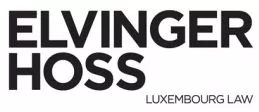- within Antitrust/Competition Law, Technology and Law Practice Management topic(s)
- with readers working within the Banking & Credit industries
The EU has trillions of euros in private savings. The Capital Market Union intends to unlock this capital. ELTIF 2.0 is central to this effort. Evergreen funds have set a new standard, but complex technical rules may be challenging for managers looking to structure a new offering. Elvinger Hoss has launched a public digital tool that will help asset managers to simulate liquidity terms and to generate a first term sheet for an evergreen ELTIF.
In recent years, we have witnessed efforts at the EU level to further develop the Capital Market Union (CMU) with the aim of facilitating cross-border investments and unlocking access to capital. In a specialist report to the EU Council, Mr Enrico Letta noted that in the EU, there are 33 trillion euros in private savings, mainly held in currency and deposit accounts.
The European long-term investment fund (ELTIF) is expected to play a large part in the CMU objective, enabling AIFMs to market ELTIFs/AIFs in the EEA with passports to both retail and professional investors.
The published final regulatory technical standards (RTS) under the revised ELTIF Regulation have provided workable liquidity rules for ELTIFs. This has triggered new ELTIF launches by asset managers.
Yves Elvinger
Partner
Evergreen standard for all asset types
Evergreen funds that have been launched in the last few years share common features that have since become standard. First of all, they accept fully funded subscriptions generally on a monthly basis and at NAV. They also offer some liquidity to investors by allowing redemptions, generally on a monthly or quarterly basis at NAV subject to a limit of 3% to 5%, and finally, they target all types of assets including private debt, infrastructure, private equity and funds. Most alternative managers have launched an evergreen vehicle targeting institutional or private investors.
Alternative managers believe that the private wealth and retail market will likely represent half of their fundraising in the next decade.
Part II funds are often used by managers before or in combination with an ELTIF. Part II funds are not new (they may be traced back to 1983) but they have gained the trust of sponsors and regulators around the world.
Recent launches of ELTIF vehicles by the largest asset managers demonstrate the relevance of ELTIF 2.0 and the trust by those managers that this vehicle will efficiently support their fundraising efforts in the private wealth and retail market.
Alternative managers believe that the private wealth and retail market will likely represent half of their fundraising in the next decade.
Joachim Cour
Partner
Setting the right redemption limits for your ELTIF
Redemptions on a given redemption date are limited to the sum of the portion of UCITS eligible assets at the redemption date, and the expected cash flow forecast on a prudent basis over 12 months.
There are two methods for determining the maximum percentage of redemptions at a given redemption date under the RTS, as specified in the annexes of the ELTIF Regulation (link).
The first method determines the maximum percentage as a function of the redemption frequency and the notice period, whereas the second method determines it as a function of the redemption frequency and the minimum percentage of UCITS eligible assets.
While each method has its merits, managers tend to use the first method, which does not directly impose a minimum of UCITS eligible assets.
Yves Elvinger
Partner
The Elvinger Hoss ELTIF liquidity calculator and term sheet generator
Given recent launches, ELTIF is certainly becoming a new standard in the fund market that managers can't ignore. However, setting up a new ELTIF can be challenging for managers, and an evergreen fund only adds to the complexity as redemption limits must be precisely calculated (i.e. notice, frequency, liquidity etc.).
In order to assist managers with the first steps of an ELTIF project, Elvinger Hoss Prussen now provides a web-based tool that allows managers to quickly calculate the liquidity terms of their product based on set criteria, which facilitates for instance the conversion of a limit applying to the liquidity pocket back into the global NAV of the fund.
The tool also allows for the automatic generation of a first term sheet for an evergreen ELTIF. The generated term sheet may then be used by managers to further conceptualise the project.
The ELTIF Term Sheet Generator & Liquidity Calculator is available here on the website of Elvinger Hoss Prussen (link).
At Elvinger Hoss, we strongly believe in the ELTIF vehicle and wish to offer efficient, accurate and digitalized support to sponsors with this digital calculator tool.
Joachim Cour
Partner
Compromises and opportunities for alternative managers
The main advantage of ELTIFs over Part II funds is that they allow all investors to benefit from an EU-wide marketing passport. The ELTIF 2.0 has gained considerable traction among the largest alternative managers, as confirmed by the most recent launches. Managers need however to be mindful of the investment limitations and asset eligibility requirements, which requires an in-depth assessment of the contemplated strategy and portfolio of assets. Moreover, the prescriptive rules governing the liquidity terms need to be assessed with caution.
Sponsors that already manage retail vehicles (often UCITS) are accustomed to the product-type restrictions contained in the ELTIF and will generally struggle less to adapt to those limitations than sponsors who are used to managing closed-ended alternative funds for institutional investors.
Although the ELTIF restrictions are sometimes difficult to cope with for certain strategies, they are proving workable in a number of configurations (eg private debt and infrastructure). Part II funds remain a suitable alternative for managers whose strategy cannot accommodate the ELTIF restrictions, and require more flexibility.
This article was written by Partners Joachim Cour and Yves Elvinger and was originally published on the Luxembourg Times website.
The content of this article is intended to provide a general guide to the subject matter. Specialist advice should be sought about your specific circumstances.



